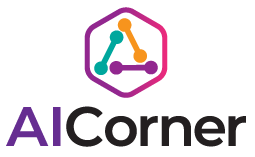Over the past few years, we have seen significant improvements in artificial intelligence (AI). This emerging technology has ignited heated discussions about what constitutes creativity, the fate of human artistic expression, and copyright law in our new era. As AI-generated content becomes more sophisticated and widespread, one area that will be crucial to watch is the understanding of its impacts both on the creative industries industry itself and also on legal frameworks around them.
The Rise of AI in Creative Fields
This has resulted in many AI-powered tools and platforms coming up across a wide range of creative domains:
Text: GPT-3 as well as other language modeling techniques can generate articles, stories… and even poetry.
DALL-E and Midjourney are incredible tools that use text prompts to generate impressive images.
Artificial Intelligence composers can produce new tunes and even finish the unfinished tracks of classical music.
Watch: How DeepFake and AI-generated video works Alternative visual media as VFX comics Formerly of…
Overall, these are some of the best OAuth Protocols that have democratized content creation for people who lack any artistic skill to create professional-ish-looking stuff. But they’ve also sounded alarms over the devaluation of human creativity and warned that it could create a glut of mass-market, formulaic content.
Redefining Creativity in the Age of AI
Once again, AI-generated content raises questions about our understanding of creativity and authorship. So is it that a machine can genuinely be creative or are we just seeing new extraordinary stuff out of their old friend after learning all these methods from its training data? This philosophical question materializes in practical ways with how we value and attribute creative works.
Supporters counter……that AI as an artistic assistant greatly amplifies human creativity, which artists to do different things and take much larger risks in the process. According to this perspective, AI may not replace human creativity but co-create with it.
Critics, though openly question whether an over-dependence on AI would result in creative output becoming more homogeneous and a departure from the human touch that gives art its significance. There’s also worry that AI-generated art may unintentionally steal or imitate existing works — similar to common concerns about originality and attribution.
Copyright Challenges in the AI Era
Although it was intended to protect human creators, current copyright law has instead revealed some of its biggest weaknesses thanks to AI-generated content. Three Important Points Came to Light
Content Ownership: who owns the copyrights of AI-created content? The AI developer, the user who requested this creation? Or The AI itself (which is not officially recognized as a legitimate “person”)?
Originality requirements: For copyright, many jurisdictions only mandate a “low level of creativity.” How would this fit into copyright on AI-generated works, especially ones that involve minimal human input?
There are big data training sets and fair use: AI models typically rely on a sprawling corpus of example materials, some or many containing copyrighted language. Is this fair use or an infringement?
TRANSPARENCY AND ATTRIBUTION: Do you have a right to know if any of the content presented is computer-generated? The question is: How to bring transparency during the creative process?
Infringement liability: Who is liable when an AI system generates content that infringes the existing copyrights?
These questions have led to worldwide legal debates, and different countries are taking a disparate path. Others recommend that AI-generated works be regarded as authorless or put into the public domain, and some argue for novel subsets of copyright protection tailored to AI creations.
The Path Forward: Balancing Innovation and Protection
But as we navigate this ever-diversifying landscape, it is important to strike a balance that fuels innovation and enables all human creators. Among the strategies he put forward were:
Copyright Laws — Legislators and policy-makers need to reconsider copyright laws to fit AI-generated content.
Set of Ethical Guidelines: AI and creative industries should consider developing guidelines or a code on best practices for the development, deployment, use, and management of Artificial Intelligence in content creation.
Create a New Focus on Human-AI Collaboration: models, where AI enhances human creation instead of removing it altogether, might result in more innovative and ethically responsible developments.
Enhance Attribution and Transparency — Creating a robust system to trace where the AI-generated content came from, and labeling it as such can ensure accountability for a considerableness of transparency in creative industries.
New Business Models: AI may provide the foundation for an entirely new industry within the creative space, one which focuses on models more reflective of how humanity has always interacted creatively — that is to say collaboratively.
Conclusion
AI-generated content has started growing and surface an unethical aspect of the creative world. While we experiment with this technology, we must have critical conversations about the potential impact on creativity and copyright as well as artistic expression itself.
These are the challenges that must be tackled head-on if we want to shape a world where AI can help humanity produce more without limiting human ingenuity. Developing this will necessitate ongoing dialogue between technologists, artists, legal scholars, and policymakers to design a system that fosters innovation yet respects the rights of human creators.
One major thing that is clear as we stand at the edge of this new age — and hunker down to debate whether or not AI-innovated content will be a snipe on creativity and copyright, starting. Over and over consumers, engineers & artists collective referrals for years to come It is a conversation that will have art form technology’s life arc in our humankind heritage mapping.

